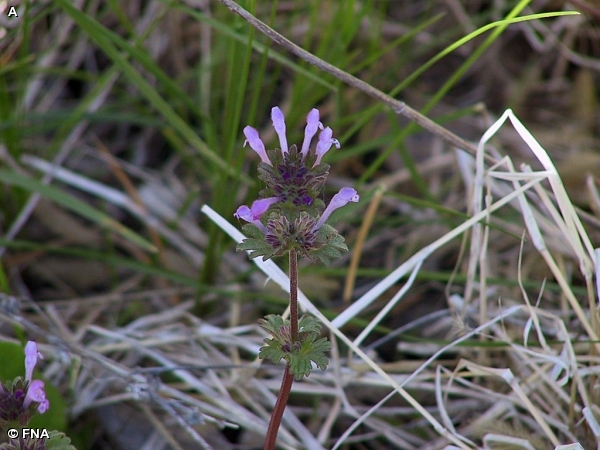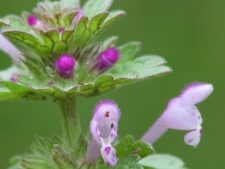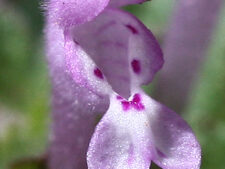
This naturalized annual was introduced from Europe. Stems are square and purplish, up to 12 inches tall (A). Opposite leaves are round to kidney shaped with broadly scalloped margins. Lower leaves are stalked; upper ones are unstalked, often clasping the stem. From 4-10 elongated lavender tube flowers occur in whorls around the base of the upper leaves and at the tip of the stem (B). The tube expands at its end into a hooded upper lip, 2 small side lobes and a broader lower lip that is divided into 2 lobes. The inside is whitish with a few purplish dots (C). Each flower produces 4 small triangular nutlets.
Found in fields, field edges and many other areas where the soil has been disturbed, flowering in April and May. Considering its abundance in nearby fields and disturbed areas, it is surprisingly rare at Fontenelle Forest and Neale Woods. It is one of our earliest flowering species, so look for it in disturbed areas in the early spring.
An alternate common name is Henbit Deadnettle. Its resemblance to nettles, but without the associated stinging hairs makes it a “dead” nettle.
Henbit shares some characteristics with another common early flowering Mint species, Creeping Charlie aka Ground Ivy (Glechoma hederacea). Creeping Charlie leaves are all stalked; no whorled leaves like Henbit. Also, flowers are a deep blue, not pinkish.
The content of NatureSearch is provided by dedicated volunteer Naturalists of Fontenelle Forest who strive to provide the most accurate information available. Contributors of the images retain their copyrights. The point of contact for this page is: Roland Barth.

 Identification
Identification
